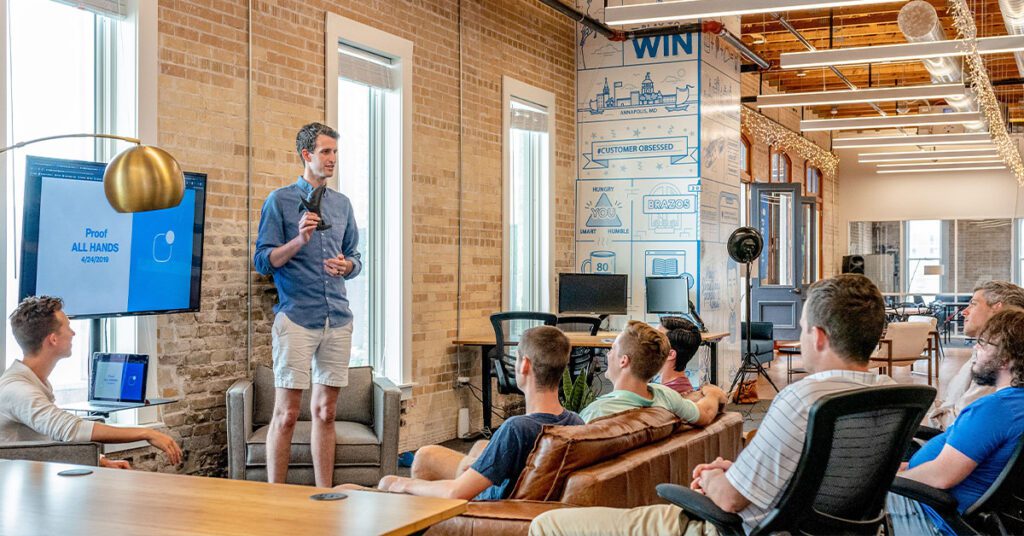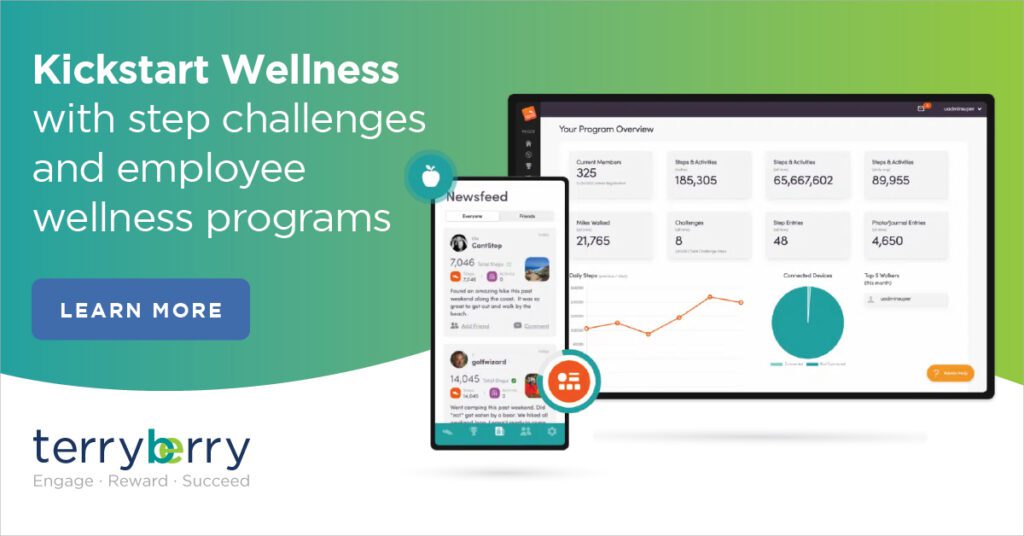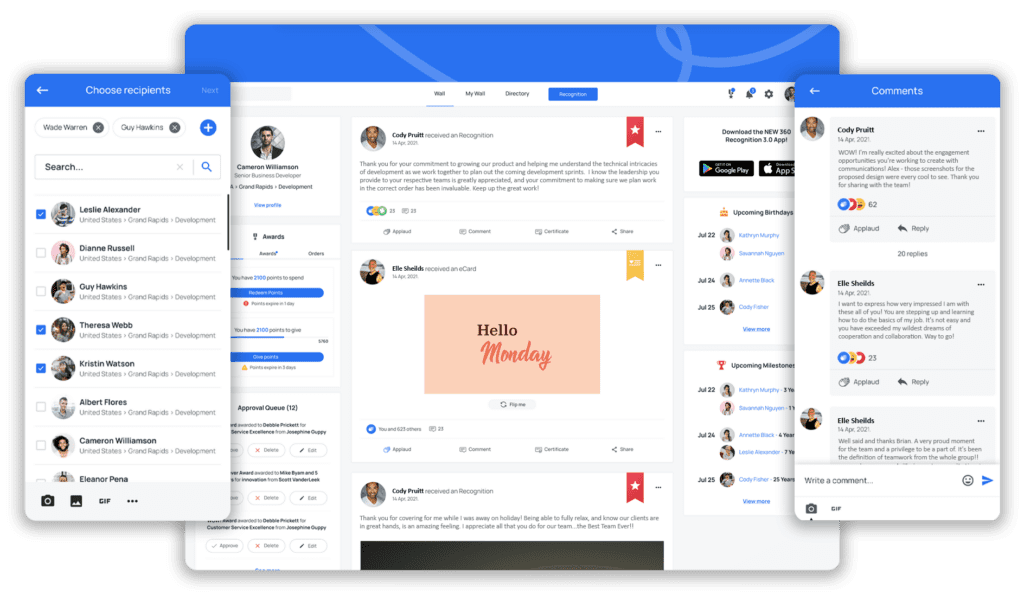October 23, 2023


Employees' mental wellbeing is finally taking center stage as one of the most critical elements of a thriving workplace, and that's why leading businesses are turning to employee mental health programs.
More than 1 in 5 US adults experience mental illness annually, and that's not just harmful to your employees (and society at large)—it's terrible for your bottom line:
- Depression interferes with a person's ability to do their physical tasks 20% of the time and impacts cognitive performance about 35% of the time.
- More than 80% of employees say that employer support for mental health is important when considering job opportunities.
- Workers who rate their employer mental health support as "fair" or "poor" report 4x more unplanned absences due to poor mental health.
- The cost of a missed workday is estimated to be around $340 per day for full-time workers and $170 per day for part-time workers.
- 40% of US employees report that their job harms their mental health.
As a human resources (HR) professional or business leader, you're in a unique position and capacity to make transformative differences for your company and employees. And we want to help you do it.
This guide walks you through everything you need to know about employee mental health programs to better support your staff. Whether you're taking your first steps into prioritizing mental health support at your organization or seeking to improve existing initiatives, this guide will provide valuable insights, statistics, and actionable steps to create a more resilient and supportive work environment.
What Are Employee Mental Health Programs?
An employee mental health program is a structured initiative (or set of initiatives) companies put in place to support their staff's mental and emotional wellbeing. It recognizes that while workplaces are often sources of camaraderie, achievement, and personal growth, they can also be environments of stress, pressure, and challenges.
Your staff spends the majority of their waking hours at your business, whether that's in-person or in a virtual setting. Regardless, your organization has a strong influence over the wellbeing of your employees, and you have an opportunity to move the needle.
"Depression isn't picky," says Ashley Gilmore, a director of behavioral health clinical services at Texas Health Dallas. "Having peer or manager conflicts that appear unresolvable, too much screen and desk time, too little peer interaction, not being able to take breaks or time off, and abrupt or unanticipated changes can increase depressed feelings."
An effective mental health program aims to mitigate negative impacts and enhance the positive, creating a balance that promotes productivity and personal wellbeing.
Employee Mental Health Programs vs. EAPs
As you explore the realm of workplace wellbeing, you'll likely encounter two terms:
- Employee Mental Health Programs
- Employee Assistance Programs (EAPs)
While they might seem synonymous, there are distinct differences between the two. Let's break it down:


Employee Mental Health Programs:
These are comprehensive initiatives set up to support employee mental health and emotional wellbeing. These programs are intended to:
- Educate: Raise awareness about mental health, destigmatize conversations around it, and equip employees with the know-how to recognize and address potential issues.
- Support: Provide resources, tools, and interventions tailored to the unique needs of the workplace.
- Promote: Encourage self-care, resilience, and a positive work-life balance.
Employee mental health programs might involve workshops, mindfulness sessions, and stress management training. Their main goal is to create a proactive environment where mental health is prioritized and integrated into the work culture rather than seen as something separate.
Employee Assistance Programs (EAPs):
Think of EAPs as a specific, often confidential, service within the broader spectrum of mental health initiatives. An employee assistance program is designed to assist employees in handling personal or work-related challenges. Their offerings often include:
- Counseling: Sessions with professionals to address personal or work-related issues: stress, grief, family concerns, or more.
- Guidance: Resources and consultations on legal, financial, or other personal matters.
- Referrals: Directing employees to specialists or services for deeper or prolonged assistance.
EAPs function as a 24/7 support line, giving employees immediate access to expert assistance when they face challenges. The confidentiality aspect of EAPs is crucial, allowing staff to reach out without fear of workplace repercussions or judgment.
Key Differences
While both employee mental health programs and EAPs aim to support the wellbeing of staff, they operate at different levels.
The former focuses on a broader, more proactive approach to workplace mental health in the workplace. The latter offers specific, reactive support for individual challenges as they arise.
As you create a comprehensive health and wellness program for your organization, consider how these two components can complement each other and offer a holistic approach to employee mental health.
How Employee Mental Health Programs Help
Before you invest time, money, and resources into employee mental health programs, you need to know if they'll work. While every organization and its employees, cultures, and challenges differ, plenty of studies and real-life testimonials confirm that, yes, these programs do help:
- Boosted Productivity and Engagement: Employees who feel supported mentally and emotionally are more likely to be engaged and productive. According to a report by the World Health Organization (WHO), for every $1 invested in treating and supporting workplace mental health disorders, there is a return of $4 in improved health and productivity.
- Reduced Absenteeism: Stress, anxiety, and other mental health challenges significantly contribute to missed workdays. Companies that prioritize mental wellbeing often see a notable reduction in absenteeism. A study found that comprehensive mental health programs can reduce absenteeism by up to 30%.
- Improved Retention: Employees are more likely to stay with organizations that prioritize their wellbeing. A survey indicated that 86% of respondents would be more likely to stay at their job if their employer directly covered the cost of therapy.
- Positive Workplace Culture: When mental health is prioritized, it creates a ripple effect. Teams become more cohesive, understanding, and supportive. The workplace transforms into a space where individuals feel safe to voice their concerns, leading to improved collaboration and innovation.
- Legal and Financial Risk Mitigation: Addressing mental health proactively can reduce the risks of potential lawsuits or compensations. Furthermore, untreated mental health issues can lead to higher medical expenses for the company in the long run.
- Enhanced Company Reputation: Organizations that prioritize the wellbeing of their staff are often seen as industry leaders and preferred employers. This can be a significant advantage in talent acquisition and branding.
Employee mental health programs aren't just a moral imperative (though that's reason enough to invest in them) but also a strategic investment. They lead to a healthier workforce, a rich workplace culture, and tangible returns regarding productivity, loyalty, and financial gains.
RELATED: Why Having a Strong Company Culture is a Competitive Advantage in Today’s Environment
Components of an Effective Employee Mental Health Program
A comprehensive approach to employee mental health is multidimensional. Here's a breakdown of the essential components that can make a substantial difference:


1. Awareness and Education
With a significant portion of workers reporting negative mental health impacts due to their workplace, the first step towards rectification is awareness. Surprisingly, 57% of employees are uncertain about the existence of accessible mental health support in their workplace—24% confirm the lack of these services, while 33% are unaware if their employers even offer them.
Here are a few ways you can take action:
- Conduct Regular Workshops and Webinars: These sessions can focus on stress management, identifying signs of mental health challenges, and coping mechanisms. Bringing in experts or therapists can offer employees actionable insights and tools.
- Provide Resources: Curated articles, instructional videos, and toolkits can be shared regularly on the company intranet or through newsletters. These mental health resources act as a constant reminder and provide employees with accessible information at their fingertips.
2. Accessible Mental Health Services
Research shows that a staggering 85% of employees don't utilize the mental health benefits provided within their health plans. This can be attributed to several factors:
- Employees often aren't aware of the specific mental health benefits included in their packages
- Many find the process of accessing these benefits perplexing
- Others are simply uncertain about how they function
Over half of those surveyed either confirmed the absence of mental health benefits in their package or expressed uncertainty regarding their inclusion.
The action items in component #1 (Awareness and Education) will help a lot with this issue, as well as the following:
- EAPs: As previously discussed, EAPs provide immediate, confidential support to employees in need. They can help employees understand their current benefits and health packages, pointing them in the right direction.
- Access to Counselors or Therapists: Whether it's on-site, virtual, or through partnerships with local practices, ensure that mental health professional counseling services are available and affordable.


3. Flexible Work Arrangements
The traditional 9-to-5 office routine is becoming increasingly outdated. Employees now seek greater autonomy in how, when, and where they work.
This flexibility caters to diverse lifestyles and commitments and profoundly impacts your employees' mental wellbeing. Implementing flexible work arrangements can be a game-changer in promoting a healthier, more balanced, and productive work environment.
- Mental Health and Remote Work: Remote work or hybrid models can offer employees a break from daily commutes and the stresses of a traditional office environment.
- Stress and Burnout Reduction: Flexibility in work hours allows employees to balance personal and professional commitments more effectively, reducing the risks of burnout.
4. Regular Check-ins and Open Communication
A culture that values regular interactions and promotes transparent communication builds trust and paves the way for early identification and intervention of potential mental health concerns.
Ensure that employees feel heard and understood to contribute to their sense of belonging, security, and overall mental wellbeing. Here's how championing open communication can make a substantial difference:
- Role of Managers: Managers should be trained to recognize signs of distress among their team members and approach the topic empathetically. Periodic check-ins can be instituted to gauge wellbeing on a more consistent basis.
- Power of Conversations: Promote a culture where discussing mental health isn't taboo. This can be facilitated through town hall meetings, open forums, and feedback sessions.
5. Recognition and Rewards
When employees feel valued and appreciated for their efforts, it boosts morale, motivation, mental wellbeing, and engagement. By celebrating both professional accomplishments and personal milestones, your business can cultivate a nurturing environment where individuals feel seen, supported, and celebrated.
Here's how incorporating meaningful recognition and rewards can uplift your workplace:
- Tailored Rewards: Offering rewards that promote self-care—like wellness days, spa vouchers, or even simple breaks—sends a clear message: the company values its employees' wellbeing.
- Personal Milestones: Recognize personal achievements, whether it's completing a marathon, adopting a healthier lifestyle, or overcoming personal challenges. Celebrating these moments boosts morale and encourages others to prioritize their wellbeing.
Make Recognition Part of Your Comprehensive Approach
Employee mental health programs lead to happier, more engaged employees and foster an environment conducive to innovation, productivity, and sustained growth. Navigating the complex and multifaceted world of employee mental health can feel overwhelming, but Terryberry can help.
Use Terryberry's employee engagement surveys, 360 feedback, and actionable analytics to get a pulse on your employees' engagement, challenges, and mental health status. Once you have insights into your workforce, you can make data-backed decisions about which elements of employee mental health you want to prioritize first.
Schedule a demo today to see how our end-to-end employee engagement platform can transform your company for the better.



